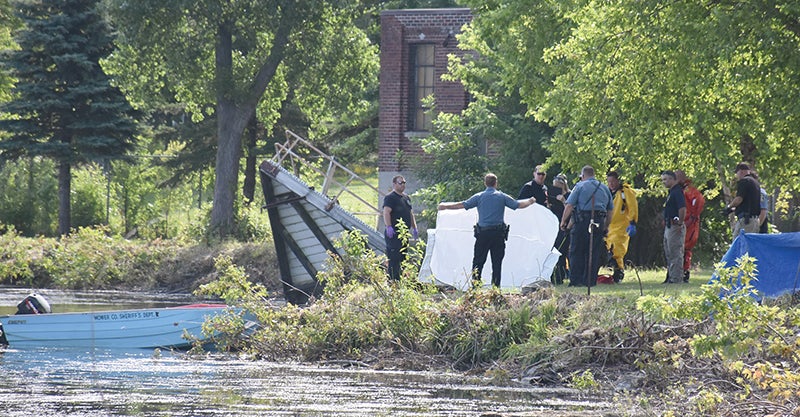Riege: Autumn Walleyes on Lakes and Rivers
Published 7:20 pm Tuesday, November 9, 2010
Once the water temperatures get below 55, most anglers put their fishing tackle away. True, the major peaks of fishing season are just about over, and the weather can get nasty, but for those willing to brave the elements there can be good fishing. If I had to pick two places to concentrate my late fall angling they would be rivers and deep clear lakes. Both bodies of water experience a good movement of walleyes during this time of the year.
The fall is a great time to get to a river near you and catch some walleyes as they start to move up towards the head of the pools or start staging along the various breaks as they head towards the dams. River walleyes bite all year, if you know where to look and how to fish for them.
In tailrace areas below the big locks and dam systems, drift fishing is the method of choice for most anglers. Concentrate on keeping the boat near places where the current changes, such as eddies and current breaks.
Watch for moving water; it will contain baitfish and fish washed through the dam system. The bigger fish hang out at the edge of the current, where it takes less energy for them to hold in place, and it is an ambush place for bait that floats by. Keep an eye out for rock formations under the surface; these edges might also hold a few lunker walleyes.
In the fall of the year the turbidity of the water subsides and walleyes are more visually stimulated as they see food floating by the slack water areas. This is not to say that all walleyes see their food before they strike and in some cases they strike more out of vibration and smell than they do from visual identification.
Clear lakes are without a doubt the most difficult to fish. In fact, many anglers won’t fish tem because the fish are sensitive to both changes in weather conditions and the presence of anglers. In the late fall, however, clear lakes are easier to fish than at any time of the year. Walleyes will be in deep water during the day but may bite all day long. The best time to be on the water however, is an hour before until an hour after sunset.
Specific weather conditions tend to trigger a walleye feeding frenzy. Basically it’s a cold front, but there’s more to it than that. The ideal conditions for catching big walleyes may come only a half-dozen times in a season. To make the most of them a fisherman must watch forecasts and the clouds and be prepared to fish one step ahead of the storm.
The main concern dealing with the movement of fish is a cold front. The frequency of a cold fronts vary in different parts of the country and at different times of the year. Regardless of the weather patterns in your part of the country, the cold front will have a profound effect on your fishing results.
During daylight, if you can’t fish during perfect conditions, it is usually better to concentrate on deep fish, rather than shallow fish. You should look for fish holding areas where wind crashes against a barrier or where the wind churns up the water rather than fishing where it is calm. Concentrate on dark water lakes that have a high percentage of fish caught during the day. Sometimes in dark mucky waters high bright sun filled days trigger a feeding frenzy because the sunlight gets all the tiny critters moving and in the cycle of fishing the end of the food chain will be the bigger fish.
Whenever you must fish in adverse conditions, being either bright sunny days or changing weather conditions, there should be a two step approach. One way is to slow down your presentation. Go slow, use the trolling motor and make your presentation very slow. Maybe even put on a single hook with split shot rather than a walking sinker and vibrating blades. Or the second approach is to go fast. Use fast trolling speeds with artificial lures and speed troll breaklines to get the fish active enough to bite.
Fishing a crankbait for big fish correctly in the river is an art, which can be mastered with lots of time on the water. Aggressive fish will hit a crankbait, which is trolled upstream. Non-aggressive fish have a tendency to strike more often when you troll downstream with the current.
Casting a crankbait for big fish will be more affective when you cast and retrieve at a 45 degree upstream towards shore. This pattern seems to work best because it imitates most naturally the way a fish sees its food tumble downstream with the current. It also makes sense because fish tend to keep their noses pointed upstream against the current.
Keep these tips in mind when you venture out this fall and you will be surprised that fishing clear lakes and rivers will increase your harvest and your memories of fall fishing.






